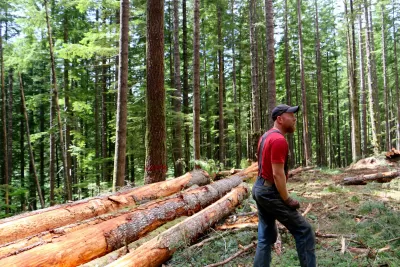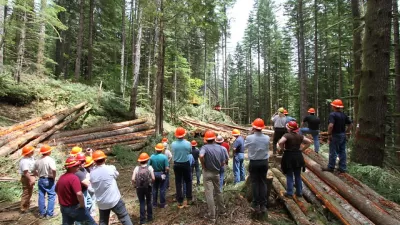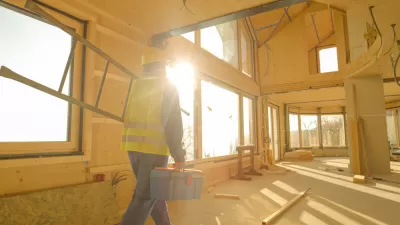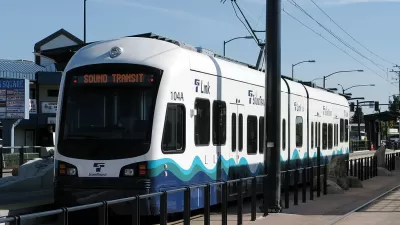Cross-laminated timber offers a multitude of environmental and economic benefits. With the state’s resources and Seattle’s construction needs, the city is the ideal location for mass timber production to take off.

"With vast timber resources and ready for retrofit facilities, the Pacific Northwest has an opportunity to lead a revolution in sustainable building and with the major challenges Seattle is facing around housing affordability and homelessness, our city can and should be at the center of demand for mass timber," writes Conor Bronsdon.
Cross-laminated timber is an ideal alternative to steel and concrete, argues Bronsdon. It performs well as a construction material, can be assembled quickly and easily at construction sites, and requires much less energy for production than steel.
Bronsdon notes that developments at the state and national levels are making cross-laminated timber a more viable option:
The passage of the Timber Innovation Act, officially signed into law in December as part of the national Farm Bill, is a big step for incentivizing the use of CLT. One of the most important provisions of the bill is that it provides annual matching grants to advance innovation in wood construction including prioritizing the use of funds to retrofit sawmills in areas of high unemployment.
He says this is an opportunity to revitalize the flagging economies of rural Washington communities dependent on the timber industry. Washington also last year changed its state building code to allow for mass timber to be used in taller buildings.
Bronsdon says that a partnership between environmental groups and the timber industry would encourage sustainable in-state production. "With responsible and economically incentivized forest management, we can change the calculus of deforestation, encourage replanting and continued harvesting as younger and lower grade trees can be used in mass timber products such as CLT."
FULL STORY: Seattle Should Lead on Mass Timber–and Solve Our Housing Crisis

Planetizen Federal Action Tracker
A weekly monitor of how Trump’s orders and actions are impacting planners and planning in America.

San Francisco's School District Spent $105M To Build Affordable Housing for Teachers — And That's Just the Beginning
SFUSD joins a growing list of school districts using their land holdings to address housing affordability challenges faced by their own employees.

The Tiny, Adorable $7,000 Car Turning Japan Onto EVs
The single seat Mibot charges from a regular plug as quickly as an iPad, and is about half the price of an average EV.

As Trump Phases Out FEMA, Is It Time to Flee the Floodplains?
With less federal funding available for disaster relief efforts, the need to relocate at-risk communities is more urgent than ever.

With Protected Lanes, 460% More People Commute by Bike
For those needing more ammo, more data proving what we already knew is here.

In More Metros Than You’d Think, Suburbs are Now More Expensive Than the City
If you're moving to the burbs to save on square footage, data shows you should think again.
Urban Design for Planners 1: Software Tools
This six-course series explores essential urban design concepts using open source software and equips planners with the tools they need to participate fully in the urban design process.
Planning for Universal Design
Learn the tools for implementing Universal Design in planning regulations.
Smith Gee Studio
City of Charlotte
City of Camden Redevelopment Agency
City of Astoria
Transportation Research & Education Center (TREC) at Portland State University
US High Speed Rail Association
City of Camden Redevelopment Agency
Municipality of Princeton (NJ)





























